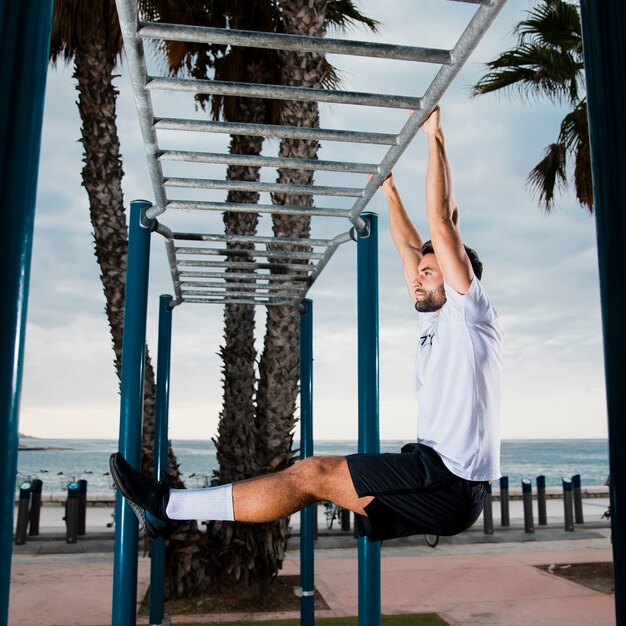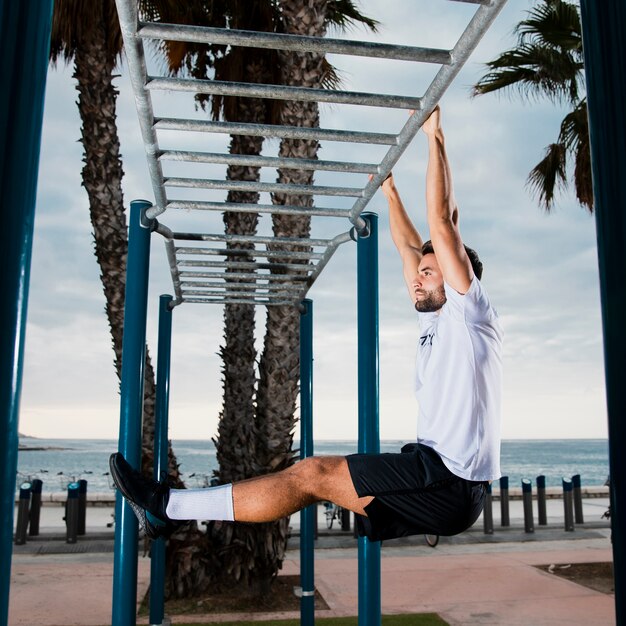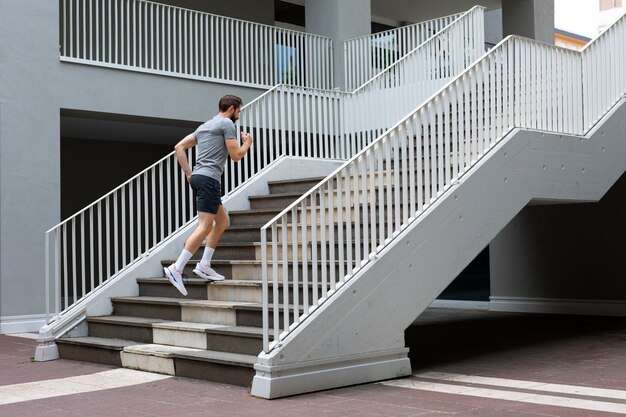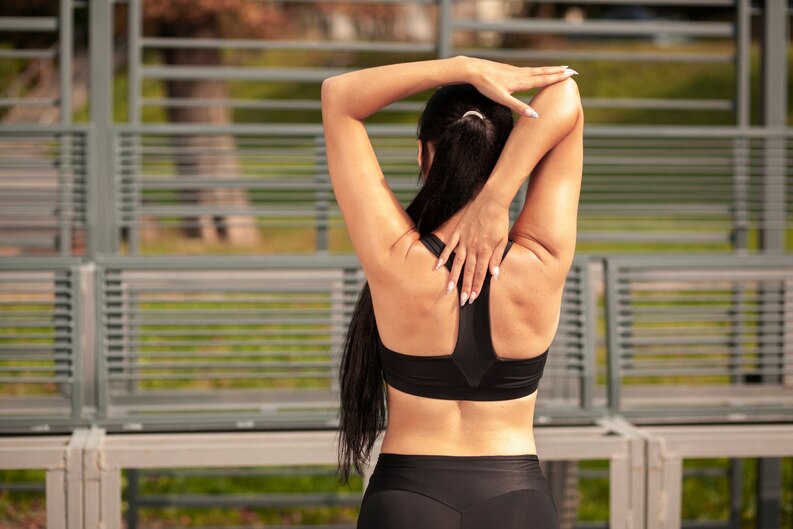
The hanging knee raise is a fantastic exercise for working on your lower abs and strengthening your entire core. It also does wonders for your forearm and grip strength. You don’t need fancy equipment; a pullup bar will do, although there are specialized tools available for this exercise. In this article, we’ll break down the hanging knee raise, explaining how to do it, its advantages, common errors, and ways to adjust the difficulty level.
How to Perform the Hanging Knee Raise
Performing a hanging knee raise is quite simple:
- Get a Good Grip: Hold onto your pullup bar or equipment with your palms facing away from you.
- Engage Your Lower Abs: Before lifting your knees, make sure your lower abs are active. Imagine tilting the top of your pelvis upwards towards your bottom ribs while gently squeezing your glutes.
- Raise Your Knees: Slowly lift your knees toward your chest while maintaining a braced lower abs and a hollowed position.
- Lower Your Legs: Lower your legs back down to the starting position.
- Repeat: Perform the desired number of repetitions.
Benefits of the Hanging Knee Raise
The hanging knee raise offers several benefits:
- Full Core Workout: It targets your entire core, making it more effective than traditional crunches.
- Improved Stability: It enhances stability, which is crucial for other activities like heavy squats and deadlifts.
- Lower Back Support: Properly done, it counteracts lower back arching and supports safe spine loading.
- Neutral Spine Position: It promotes a neutral spine by strengthening the core.
- Hand and Forearm Strength: Gripping the bar improves hand and forearm strength, benefiting exercises like pullups and activities like climbing.
- Abdominal Development: The intense resistance on your abdominal wall promotes hypertrophy and muscular development in your entire abdominal area, especially when combined with a proper nutrition plan.
Muscles Worked with the Hanging Knee Raise
The primary focus is on the abdominal muscles, including the rectus abdominis and external obliques. It also engages the internal obliques, hip flexors, forearm muscles, and shoulder girdle muscles.
Common Mistakes to Avoid
Two common mistakes during hanging knee raises are:
- Arching Your Lower Back: This happens when you don’t engage your lower abs and glutes properly, leading to an arched lower back. It reduces core strength gains and can cause low back pain.
- Swinging Your Legs: Swinging your legs using momentum reduces the work your core does. Controlled motions and maintaining tension are more effective.
Hanging Knee Raise Variations
Depending on your fitness level, you can adjust the difficulty of hanging knee raises:
Easier Variations:
- Supine Knees-to-Chest: This variation is done lying on your back and is less challenging on your grip and knees.
- Supine Straight-Leg Raise: It’s tougher as it creates a longer lever with your legs, increasing abdominal engagement.
- Dead Hang from a Bar: Helps build static grip strength before progressing to hanging knee raises.
Harder Variations:
- Hanging Leg Raise: This variation keeps your legs straight, making it more challenging.
- Weighted Knee Raise: Attach weights to your ankles for added resistance.
- Toes-to-Bar Raise: The most advanced version, requiring substantial core strength and flexibility.
Remember to choose a variation that allows you to do 10-15 repetitions with perfect form. Adjust as needed to maintain control throughout the exercise.
Conclusion:
The hanging knee raise is an excellent exercise for targeting your lower abs and strengthening your core. By performing it correctly and adjusting the difficulty level as needed, you can enjoy its many benefits while avoiding common mistakes. So, go ahead and give it a try to enhance your core strength and overall fitness.










